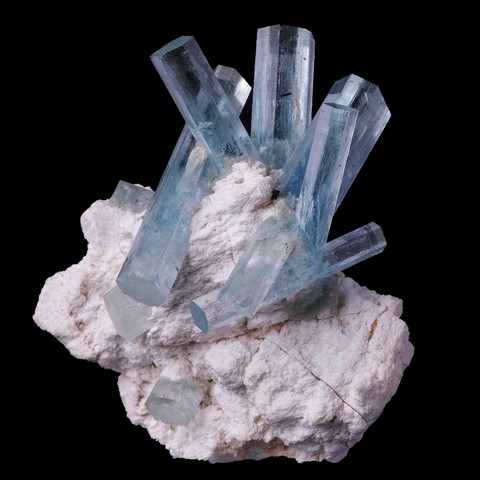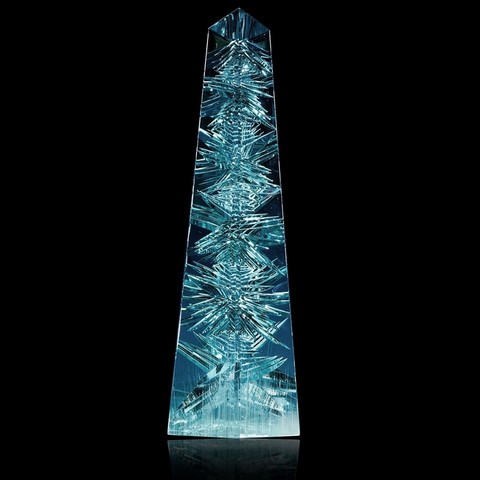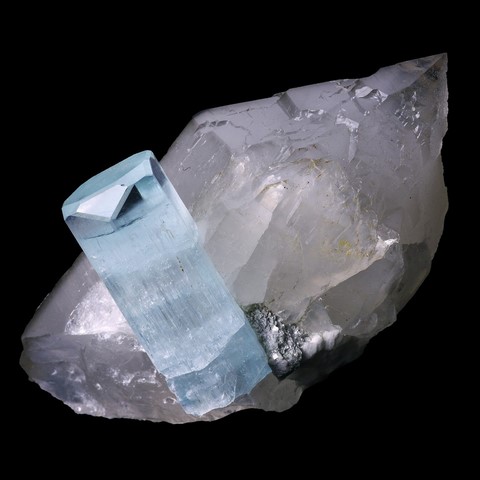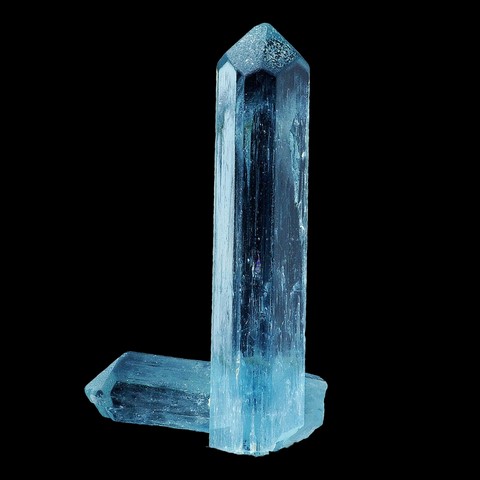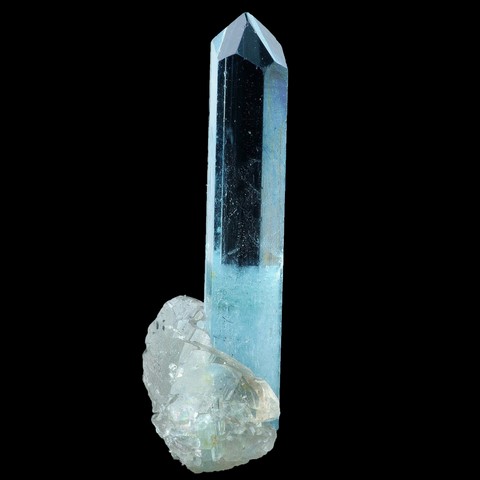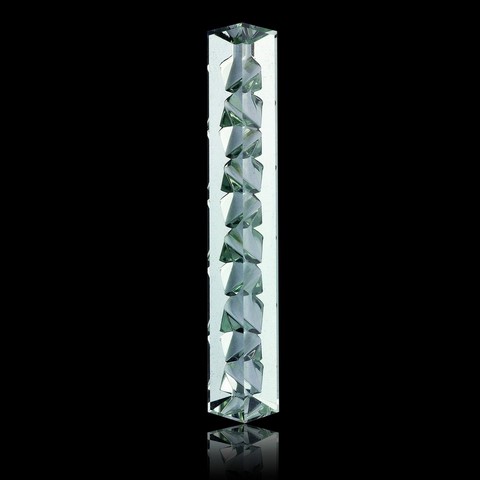AQUAMARINE
Class : Silicate
Subclass : Cyclosilicate
Crystal system : Hexagonal
Chemistry : Be3Al2Si6O18
Rarity : Common
Aquamarine is a transparent to translucent variety of beryl from pegmatites. Its blue-green to blue color is due to iron that it contains in trace. Its name comes from the Latin aqua (water) and marina (marine) because of its color reminds the ocean. It is a mineral known since Antiquity. Aquamarine crystallizes in elongated prisms with hexagonal sections, sometimes bevelled often with flat terminations. It is a mineral variety with a strong importance for jewelery. It is extremely appreciated and used despite of a relative fragility.
Aquamarine in the World
Aquamarine in France
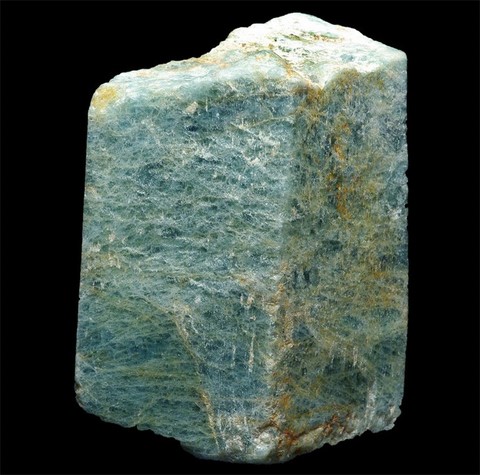
In France aquamarine is present in some pegmatites of Limousin : crystals of 5 cm have been reported in Chanteloube Haute-Vienne.
Note also the huge stony but bluish Beryl pegmatites of Biauchaud at St-Pierre la Bourlhonne in Puy-de-Dome (photo on the left), where aquamarine is associated with schorl in a massive quartz.
We also find aquamarine more anecdotally in micro-crystals in the La Lauzière Massif, in French Alps.
Twinning and special characteristics
Beryls and especially aquamarine never present twinning but some inclusions can be spectacular. We note especially a series of fluid or gaseous inclusions called "helicoidal" or "spiral" inclusions propagating on the axis of elongation of the crystal (photo right). These characteristic inclusions of beryls are due to rapid growth by "screw dislocation" along the axis of elongation.

Fakes and treatments
Among the classic fakes, there are assemblages of broken crystals stuck on pieces of pegmatite (left picture). The collage is usually hide with crushed muscovite and not necessarily visible at first glance. Note that these fake are generally made in Pakistan with the material collected in this region, so it is not uncommon to find unlikely parageneses : aquamarine, topaz, pink fluorite, morganite, apatite, etc...
Because of the importance of aquamarine in jewelry, it is a gemstone that is widely treated. Indeed in nature, the crystals are generally near colorless. To remedy this "problem", aquamarine is very largely heated to improve the color, this treatment is impossible to detect without advanced laboratory equipment. Generally in the market, gemstones with a bright color without inclusion are usually all treated.
Finally in the same way like emerald, aquamarine can be synthesized in laboratory, characteristic chevrons inclusions, visible under magnification, but only an expert eye can locate them. Further investigations based on the isotopy of oxygen allow to make the difference.
Hardness : 7,5 to 8
Density : 2,68 to 2,91
Fracture : Conchoidale to uneven
Trace : White
TP : Transparent to opaque
RI : 1,564 to 1,593
Birefringence : 0,004 to 0,007
Optical character : Uniaxial -
Pleochroism : Weak
Fluorescence : None
Solubility : Hydrofluoric acid
Magnetism : None
Radioactivity : None

